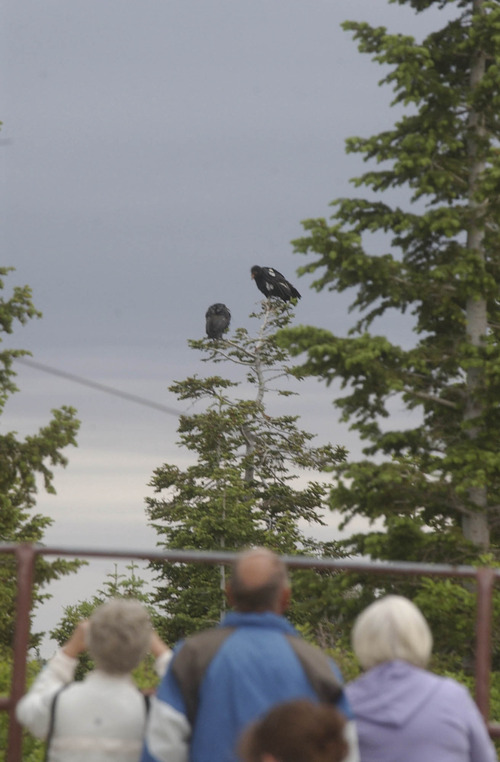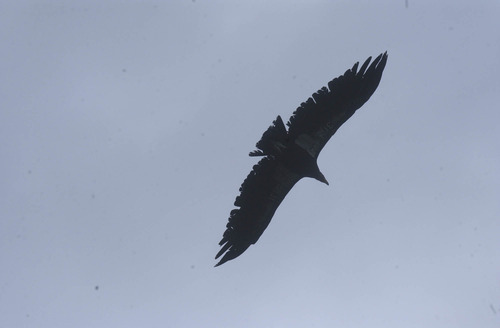This is an archived article that was published on sltrib.com in 2013, and information in the article may be outdated. It is provided only for personal research purposes and may not be reprinted.
The female of Utah's only breeding pair of California condors was found dead Wednesday in Zion National Park, setting back the 20-year effort to pull this massive winged scavenger from the brink of extinction.
Members of The Peregrine Fund, a bird conservation group that tracks condors in Utah and Arizona, recovered the bird, known as Condor 343, near Angels Landing, and sent it to a San Diego lab to determine whether lead poisoning played a role. California condors can live up to 60 years; Condor 343 was 9 years old.
In past years, nesting efforts in Utah failed because lead exposure sickened either 343 or its mate, Condor 299, during breeding season, which overlaps hunting season, according to Chris Parish, Peregrine's condor field project supervisor.
He was not prepared to blame lead poisoning for 343's death until the results of a necropsy are returned in a few weeks. But two other condor deaths in Arizona this season have been attributed to lead, viewed as the biggest threat to recovering this endangered species.
"We can say lead poisoning has thwarted every effort to produce young in Utah," Parish said, adding that a majority of lead poisoning cases arise during hunting season.
Should the report finger lead, the bird's death could renew concerns over Utah hunters' use of lead-based ammunition, which fragment on impact with big game, according to research supported by the Peregrine Fund. Bullet fragments can infect the tissues of dead dear and elk, including the gut piles hunters leave behind in the field. Condors and other scavengers can easily ingest the lead, which not only sickens or kills the birds, but endangers their health over the long-term.
"If we can trap them early enough we can treat them for lead poisoning," said Parish, who favors voluntary measures rather than a ban on hunting with lead-based ammunition.
Zion's protected canyons and plateaus are crucial to condors' recovery in southwest Utah, the northern end of their historic range, because the park's towering sandstone faces provide ideal nesting habitat, said Fred Armstrong, the park's division chief over natural and cultural resources. Condors 343 and 299 have shown interest in Angels Landing in the past.
The birds don't build nests, but rather nest in existing crevasses and ledges. But condors fly up to 100 miles to scavenge carcasses of large mammals, which are not as available inside the park. Birds living in the park presumably feed on the remains of big game killed by hunters outside the park, along with road kill and dead livestock. The loss of 343 came as a disappointment to park officials, who remain hopeful the surviving male will soon bond with another mate or another pair will move in.
But that might not happen soon.
"It takes several years for condors to become sexually mature," Armstrong said. "It is undetermined how long for a bond to form between pairs that would seek out appropriate nesting ledges in the park. It might take years for a condor pair to discover habitat in the park."
California condors mate for life and pairs produce just one egg every other year. By the end of 2010, their numbers had rebounded from a low of 22 in the early 1980s to 381 thanks to a captive breeding program. But only 76 were living in the wild in Arizona in 2010, according to Peregrine. These free birds have produced only 12 young since 2003.





